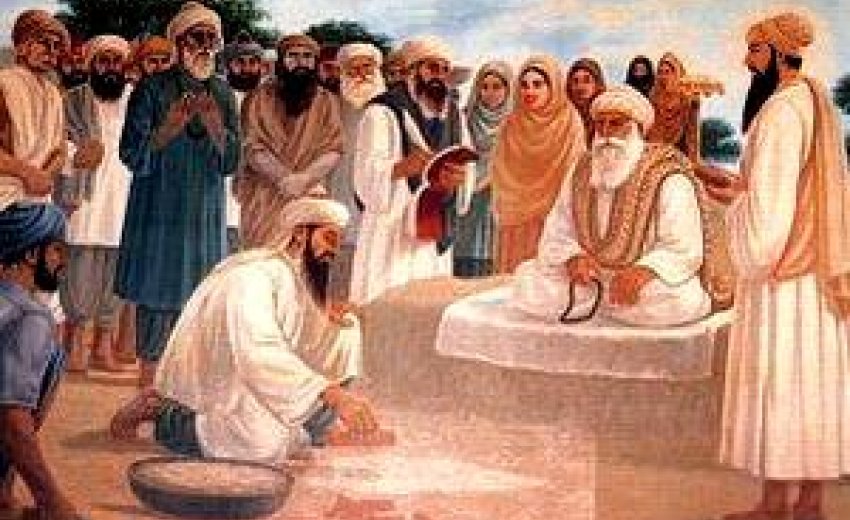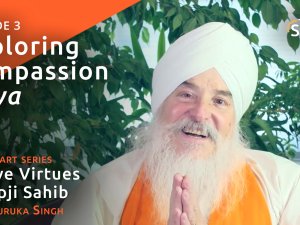One of my friends’ nieces asked me a question in the Gurdwara Langar Hall: "What is the difference between Sufism and Sikhism?" I just wondered where I should start. The first thing that came into my mind was the Sufi Saint named Mian Mir, who was requested by Guru Arjan Dev Ji, the fifth Sikh Guru to lay the foundation of the Harmandir Sahib, the Golden Temple.
A couple of months’ prior to this, one of my Iranian friends happened to mention that there are similarities between Sufism and Sikhism. He was also kind enough to lend me a book called Sufi- Expressions of the Mystic Quest by Laleh Bakhtar which gave me considerable insight into the tenets of Sufism.
Hatim-al-Asamm established 4 key principles of Sufi life:
1. To remember that no other person eats your bread for you.
2. To remember that no one but you performs your actions.
3. To remember that death is coming, so you should address your life in readiness for it.
4. To remember that you are under the eye of God.
The Sikh faith advocates similar principles of Naam japna, uttering the name of God; kirt karni, earning an honest living and wand chakna, sharing one’s blessings with others who are in need. Every action good or bad is under His command or his eyes. The day one is born, one has to accept death to gain favour in the spiritual path of devotion.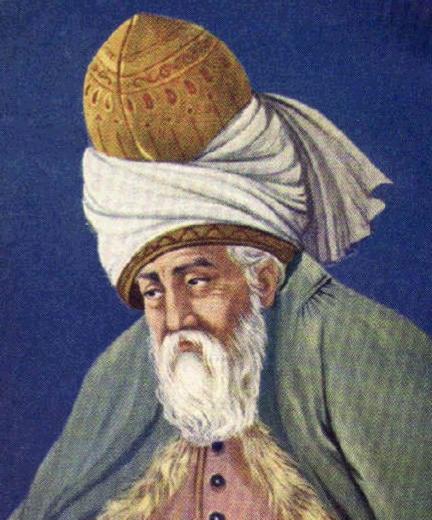 As Rumi, in his poetic verse says: I died from mineral and plant became; Died from the plant and took a sentient frame; Died from the beast, and donned a human dress; When by my dying did I e’er grow less; Another time from manhood I must die to soar with angel-pinions through the sky. “ Midst Angels also I must lose my place Since “ Everything shall perish save His face.” Let me be Naught! The harp-strings tell me plain That unto Him do we return again! (Jalal al-Din Rumi, “ Mathnawi”, translated E.G. Browne.)
As Rumi, in his poetic verse says: I died from mineral and plant became; Died from the plant and took a sentient frame; Died from the beast, and donned a human dress; When by my dying did I e’er grow less; Another time from manhood I must die to soar with angel-pinions through the sky. “ Midst Angels also I must lose my place Since “ Everything shall perish save His face.” Let me be Naught! The harp-strings tell me plain That unto Him do we return again! (Jalal al-Din Rumi, “ Mathnawi”, translated E.G. Browne.)
Sufi devotion to God is often characterised by intense ecstatic experiences and such states come through the achievement of dhikr or remembrance, a way to experience the intense presence of God. Similarly, in the Sikh faith God is remembered by utterance of his Name and it is more effective in the presence of like-minded individuals whose goals are getting connected with God.
Sufi devotion like Sikh faith has beautiful poetry and music which in Sikh faith it is called Gurmat sangeet (sacred music of the Sikhs.) In both the Sufi and the Sikh faiths this involves meditative practices that can lead to union of the individual with God.
Rumi aka Jalaluddin Balkhi (1207-1273) befriended a dervish, an ascetic called Shams. Rumi was a prolific writer of poetry, offering profound religious insight; he alone created the “whirling” dance adopted by his followers to connect with God. Similarly, in the Sikh faith when chanting, the devotee may spontaneously begin a circular body movement striving to achieve internal bliss and connect with God. Regular meditation and constant remembrance of the Divine through its Divine Names and through repetition of the sacred songs achieve the connection with God. The word ‘Sufi’ actually means wool, referring to woollen garments. The root is ‘safa’ which means purity in Farsi. This refers to a simple and inexpensive woollen garment which implies simplicity and purity in life. The Sikh faith has similar philosophy. The word ‘Sikh’ originated from ‘sikhya’ (shishya) meaning a humble disciple or a learner. Guru Nanak, the Founder of the Sikh faith had that simple message of remembering God by uttering the Name, honest living and sharing one’s earnings with others and serving others without any recognition or any gain. He was humble enough to go on his many travels and consolidate these good practices and religious philosophies in what we now know as the Sikh faith.
The word ‘Sufi’ actually means wool, referring to woollen garments. The root is ‘safa’ which means purity in Farsi. This refers to a simple and inexpensive woollen garment which implies simplicity and purity in life. The Sikh faith has similar philosophy. The word ‘Sikh’ originated from ‘sikhya’ (shishya) meaning a humble disciple or a learner. Guru Nanak, the Founder of the Sikh faith had that simple message of remembering God by uttering the Name, honest living and sharing one’s earnings with others and serving others without any recognition or any gain. He was humble enough to go on his many travels and consolidate these good practices and religious philosophies in what we now know as the Sikh faith.
Both Sufism and Sikhi advocate simplicity, equality and a shift in one’s life away from materialism. Sufism recognises the Immanence and Transcendence of the One in all. Sikh belief is the same. Sufi philosophy is based on the nature of Reality, which is transcendent and the Sikh faith also faith advocates seeking union with the inner Truth through meditation and invocation of the Divine Name by ecstatically repeating the mantras of the Shabad Guru.
The Mool Mantra shows the way in which Sikhs relate to the transcendence and immanence of God. God is seen as Immanent in all existence. He is qualified with certain attributes to which the individual human self can offer devotion and love. God as revealed in this creed is Indivisible, Absolute, Timeless and uncreated. This transcendent –immanent aspect of God is the general trend of belief in religious devotion. As with Allah is in Islam, Ik Oankar in the Sikh faith is transcendent yet always present in all things.
Guru Nanak’s message was: Truth is high. But higher still is truthful living. Guru Ji also said to put away pride. The essence of religion is humility, service and simplicity.
The origins of Islam, Christianity, Hinduism, Confucianism, Judaism and other faiths were established much earlier so Guru Nanak Dev Ji had the opportunity to analyse all faiths and distil the essence of a practical way of life and the Sikh Dharma then came into existence.
The words of the Mool mantra are so important that the true meaning cannot be translated in a way that gives the true essence of the meaning. The Mool Mantar speaks of the Oneness of God, His eternal existence, and His role as the creator and sustainer of all things. He is said to be beyond time, birth and death. People know him through the Grace of the Guru, which means through himself, because Nanak always refers to God himself as the Guru. Naam, wand and kirt karni are the essential components of the Sikh way of life.
Education equips an individual with detailed knowledge of any field, whether it is philosophy, psychology or law. Such knowledge prompts individuals to analyse the existence of God in scientific terms. Mysticism and personal spiritual links are difficult to explain and reason on the basis of science or theory. Analysis has no place in spirituality because the experience is ineffable and cannot be explained in logical terms. But the experience of this reality gives the individual the Grace and the strength to achieve his aspirations and ambitions in life. Saying that God exists but that he/she/it is not palpable or visible but can be experienced in meditation is akin to trying to tell someone what a strawberry tastes like if they have never eaten one. Better by far to simply offer that person a strawberry.
Guru Nanak Dev Ji comments on religion, “It doesn’t matter to me from which source one is inspired. My prayer unto dear God is, please take that person into Your arms, if that person is inspired to come and meet with You.” How you are inspired does not matter so long as you are inspired rightly into God’s arms and we should be tolerant enough to accept other’s sources of inspiration, which are certainly manifold. Mir Mohammed Muayyinul Islam, (1550-1635) popularly known as Sain Mian Mir was a famous Muslim Sufi who resided in Lahore specifically in the town of Begampura. He spent most of his life in and around Lahore. He was a close friend of The Fifth Guru, Guru Arjan Dev Ji; he was invited to lay the foundation stone of the Harmandir Sahib, (now known worldwide as the Golden Temple.)
Mir Mohammed Muayyinul Islam, (1550-1635) popularly known as Sain Mian Mir was a famous Muslim Sufi who resided in Lahore specifically in the town of Begampura. He spent most of his life in and around Lahore. He was a close friend of The Fifth Guru, Guru Arjan Dev Ji; he was invited to lay the foundation stone of the Harmandir Sahib, (now known worldwide as the Golden Temple.)
Main Mir Ji is still highly respected by the Sikhs. He was a man who had no prejudice against any religion and had a very deep love of Guru Nanak's teachings. He travelled often to Amritsar to meet with Guru Arjan Dev Ji. In turn whenever the Guru visited Lahore, he would always meet with Saint Mian Mir. Saint Mian Mir knew a large number of the Gurus' verses by heart. Guru Arjan Dev, the fifth Sikh Guru, often visited Lahore, the birth-place of his father (the fourth Guru, Guru Ram Das) to meet his relatives. On the occasion of one of such visit, he called on Mian Mir. The two men of God met and became life-long friends. Mian Mir was thirteen years older than Guru Arjan. 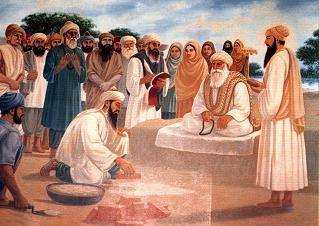 Guru Arjan Dev Ji was responsible for the construction of many tanks and buildings. In 1588, he planned to build a temple in the centre of the holy tank called Amritsar or the pool of nectar. As the temple was to be thrown open to people of all castes, creeds and climes, he invited Mian Mir to lay the foundation stone of the Harmandir Sahib. Mian Mir came to the city of Amritsar wearing a religious mendicant's long cloak made up of patches of coarse wool and a cone-shaped cap, with a rose flower on top.
Guru Arjan Dev Ji was responsible for the construction of many tanks and buildings. In 1588, he planned to build a temple in the centre of the holy tank called Amritsar or the pool of nectar. As the temple was to be thrown open to people of all castes, creeds and climes, he invited Mian Mir to lay the foundation stone of the Harmandir Sahib. Mian Mir came to the city of Amritsar wearing a religious mendicant's long cloak made up of patches of coarse wool and a cone-shaped cap, with a rose flower on top.
Mian Mir was given one of the warm welcomes for which Guru Arjan Dev Ji was famous. The two holy men embraced each other in sincere love and regard. The purpose of the temple was disclosed to the Sufi saint. Mian Mir was delighted at the fine objectives the Guru had in mind. The foundation-stone was laid. Hymns were sung in praise of God and sweets were distributed to all.
Sufism is like all forms of mysticism, about the experience of The One in EveryOne. By reason of its esoteric aspects; it introduces secret practices and initiation rites that vary depending on the masters who teach them.
The most original aspect of Sufism is its spirituality. In the Sufi view, God is approached by degrees. Firstly, the law of the Koran must be respected; but this is only a first step which does not lead to the understanding of the nature of the world.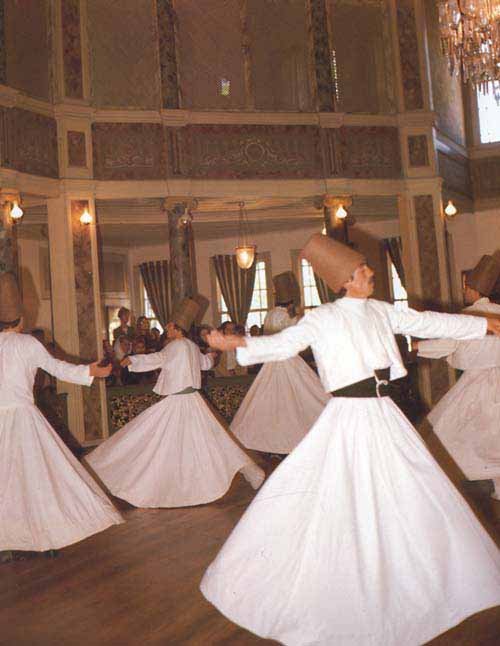 The rituals are of no use if one doesn’t know their hidden meaning. It is only through an initiation that one is enabled to see behind the appearance of things. For example, Man is a microcosm, a world in miniature, in which the image of the universe is to be found, the macrocosm. So it is quite natural that in deepening one’s knowledge of man one should arrive at an understanding of the world which is already a step towards God.
The rituals are of no use if one doesn’t know their hidden meaning. It is only through an initiation that one is enabled to see behind the appearance of things. For example, Man is a microcosm, a world in miniature, in which the image of the universe is to be found, the macrocosm. So it is quite natural that in deepening one’s knowledge of man one should arrive at an understanding of the world which is already a step towards God.
According to the Sufis, all existence comes from God and God alone is real. The created world is but a reflection of the Divine; “the universe is the Shadow of the Absolute ". The ability to discern God behind the screen of things implies purity of soul. It is only through an effort to withdraw from the world that one can approach God: " Man is a mirror which, when polished, reflects God.”
The God that the Sufis discover is Love and the way to experience Him is through Love: “whoever knows God, loves Him; whoever knows the world turns away from Him.” “If you wish to be free, become a prisoner of Love.” The Sikh faith also teaches that it is Love that enables one to connect with God. “Hear you all! I say the truth, only he attains God, who loves Him truly (Saach kaho’n sun leho sabhai, Jin prem kee-o tin hi prabh paa-eo.) There are three spiritual virtues which the Sufi internalises as does the Sikh. The three are humility (khushu), charity (karamat) and truthfulness (sidq.) Humility corresponds to one’s being and not to one’s actions. It is the realisation that God is everything and we are nothing. Essentially, it is awareness that we are non-existent, for actually God exists with every human being and every human being has something to teach us, and by being unegoistical, one learns from all and become humbler. Charity is very closely related to nobility. It is all about surrendering oneself to God and therefore the supreme charity is to invoke the Name of God since everything comes from and belongs to God. Truthfulness lifts us from the platform of existence to the platform of knowledge. These three virtues need to be internalised to lead one to spiritual union to God.
There are three spiritual virtues which the Sufi internalises as does the Sikh. The three are humility (khushu), charity (karamat) and truthfulness (sidq.) Humility corresponds to one’s being and not to one’s actions. It is the realisation that God is everything and we are nothing. Essentially, it is awareness that we are non-existent, for actually God exists with every human being and every human being has something to teach us, and by being unegoistical, one learns from all and become humbler. Charity is very closely related to nobility. It is all about surrendering oneself to God and therefore the supreme charity is to invoke the Name of God since everything comes from and belongs to God. Truthfulness lifts us from the platform of existence to the platform of knowledge. These three virtues need to be internalised to lead one to spiritual union to God.
DHIKR AND SAMA
'Dhikr and Sama' were based on words attributed to the Prophet: "Whenever men gather together to invoke Allah, they are surrounded by Angels, the Divine Favour envelops them, the Divine Glory (as-Sakinah) descends upon them, and Allah remembers them in His assembly." The hospices became centres where lay people from the countryside would gather together with the members of the order to obey the Quran's injunction to remember God often.
This was done in the celebration of the Dhikr, which involved the communal rhythmic repetition of a phrase, usually from the Quran, in which one of the names of God appears. Breath control and body movements were also used as techniques to aid in achieving concentration and control over senses and imagination. The mala or rosary was used since the 8th century as an aid to counting the many repetitions (it entered Christian Churches from Sufism via the Crusades.) This concentrated meditation can lead to a mystical trance and enlightenment which transforms man's whole being.
'Sama' was first developed in the mid 9th Century in Baghdad. It is another communal practice, defined as a concert of music, poetry recital, singing and dance, which leads the participants to a mystical experience where they seem to hear the music of the heavenly spheres and the voice of God Himself. It attunes the heart to communion with God and is thought to remove all veils hiding God from man's inner vision.
Both the Sikh and the Sufi believe in One God and the deep remembrance of God through meditation. Both understand that we are all His creation and that He exists within us and without. Both the Sikh and the Sufi imbibe the virtues of morality, humility, charity, kindness and truthfulness.
References:
- Sufi-Expressions of the Mystic Quest by Laleh Bakhtiar; Thames and Hudson, London 1976.
- Eyewitness Companion: Religions by Philip Wilkinson; DK Publishers 2007
- Les Religions de l’Humanité, by Michel Malherbes, pages 192-194 Ed. Critérion
- Sufism passages from Wikipedia.

